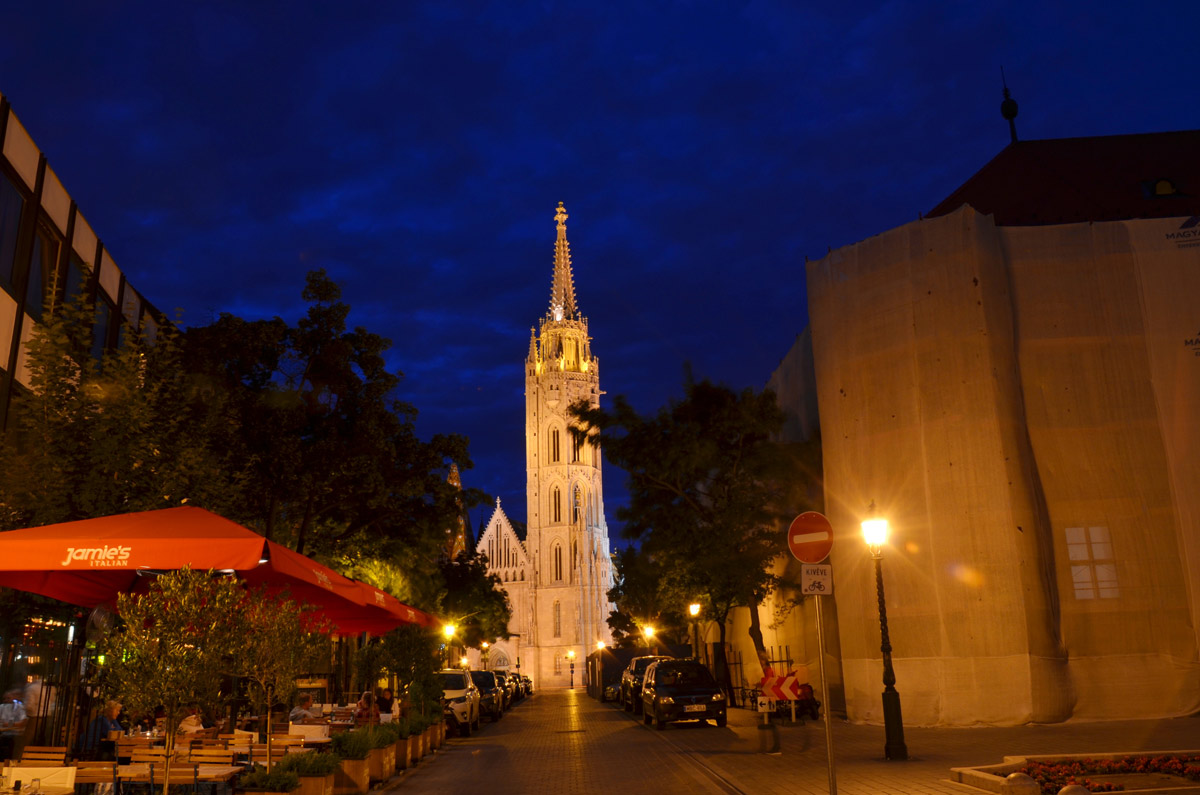Part 1 – Travel Essentials
Overview
Budapest Is a city with incredible architecture, friendly and helpful residents, excellent public transportation and clean and safe streets. It is the merge of two cities on opposite side of the Danube River, Buda and Pest (pronounced pesh), in 1873. Buda contains the Castle District (includes the Royal Palace and the Matthias Church), which is the main place tourist visit in the city. Otherwise, it is mainly residual neighborhoods in between numerous hills. Pest is a walkable, urban and trendy with restaurants, bars and clubs. It contains the Parliament (one of the largest buildings in the world), St Stephen’s Basilica and the Opera House (all can’t-miss places). Budapest has twenty-three districts with The Castle District (District 1) and Districts 4-7 (in Pest) being the favorites among tourists.
Budapest has a population of 1.7 million, which is 17% of Hungary’s population of 9.8 million. It is 200 square miles, 0.5% of Hungary, which is about the size of Indiana (about 36,000 square miles). While Budapest is the most densely part of the country, it is surprisingly without skyscrapers which keeps down the population and makes it comfortable to live in. The reason for the lack of skyscrapers, is that nothing can be higher that the parliament (representing the government) and the Saint Stephen’s Basilica (representing the church); both ninety-six meters (315 feet), which symbolizes their equal status. Ninety-six is not arbitrary, it is based on the year 896 which is when Hungarian Magyars came here from the East (originally either from Central Asia or the Ural Mountains).
The grandness of the buildings and monuments might seem unusual for a small country, but it was once over three times larger and part of the mighty Austro-Hungarian Empire under Habsburgs rule. They are also many statues and memorials to commemorate the founding Magyar rulers.
Budapest has a superb public transportation system with extensive and frequent buses, trolleys and a four-line subway. As a result, you can travel to most places you want to visit cheaply and quickly.
The country is cheap by New York City standards. We took the maximum at the ATM, (about US$1,100) and only spend half of that in a week without scrimping on anything. In addition, we prepaid for comfortable and convenient lodging only $60 / night.
Hungarians are welcoming to tourists and most in people in Budapest know at least a tiny bit of English (which is extremely helpful, as their language is difficult for most visitors).
My wife, Khadija, and I concluded if you want an inexpensive and safe destination that is comfortable and no-hassle to get around with a fascinating history and extraordinary architecture; Budapest is a very good choice.
Demographics
The Hungarian people refer to themselves as Magyars, after the nomadic people from the east, and established a country in 896 in the Carpathian Basin. However Asiatic the population initially was, it inexorably became more European through mixing with native Slavs and emigration. St. Stephen founded the state of Hungary in 1000 AD and made Catholicism the national religion. Because the country was a continuing melting pot, todays Hungarians look European but can vary from blonde, light-complexioned and blue-eyed to dark-haired, olive-skinned and brown-eyed.
What unites Hungarians is the culture and language. Before World War I, Hungary was about three times larger than today with a population around 20 million. Since it was on the losing side of that war, much of its land was awarded to other countries. Significant Hungarian populations live in Romania, Austria, Slovakia, Serbia and Ukraine. I met a young lady working in a hotel in Cyprus, who was Hungarian but actually grew up in Romania.
According to linguists, Hungarian is part of the Finno-Ugric group which includes Finnish and Estonian. However, Finnish friends have told me they are just as lost as every other foreigner when trying to understand Hungarian. It is difficult to pronounce for English speakers. The alphabet is Latin, but with extra vowels (á, é, í, ó, ö, ő, ú, ü, ű and extra consonants: cs, gy, ly, ny, ty, sz, zs) and trying to figure out how to correctly pronounce a word by reading it is very challenging. If you learn to say thank you in Hungarian, you can generate a lot of good will. Hello is understandable and identifies you as non-Hungarian. Merci often works for thank you.
Visa Requirements
Hungary is part of the Schengen Area comprising twenty-six European states that have officially abolished passport and all other types of border control at their mutual borders. Residents of the USA and 30 other countries including Switzerland, Canada, Australia, New Zealand, Israel and many countries of Latin America do not need visas for a stay of ninety days.
Currency
The Hungarian Forint exchange rate was 275HUF to $1US, when we visited in June 2017. You can use euros many places, but the exchange rate is usually poor. For the best rate, use ATMs or go to an Hungarian bank after you arrive. Check if your ATM-bank or credit card issuer have foreign transaction or ATM fees, which can add up over a trip.
Credit Cards
Credit cards are accepted many places.
Air Travel
Our primary destination was Cyprus to visit a friend. We found that flights between Cyprus and the rest of Europe were relatively inexpensive. We used United frequent flyer miles to fly to Budapest (with Lufthansa) and returned from Sofia (with Austrian Air). There was no more frequent flyer mileage used that if we flew round trip to either Budapest or Sofia, so this was a way to travel to two countries for the price (in mileage) of one.
Transportation
Budapest has all you can want for traveling around the center part of the city and is very good beyond. Each journey in a bus, trolley (electrified bus), streetcar (tram) and metro (subway) is one ticket for HUF 350 (about a US dollar and a quarter). I highly recommend getting the unlimited ride period card equal to the period you will be there because 1) you will use the system much more than you think because it is so efficient, 2) unlimited use fares usually are cheaper per ride, 3) many trips require transfers between the systems (e.g. metro to bus) requiring an additional ticket and it is easier to hang on to one card than many paper tickets. When you enter the car of any system, you punch the ticket (not unlimited cards) in a box on a column, but no turnstile to stop entry. However, there are frequent checkers who walk through the cars and ask for proof of ticket purchase. One-day travel card is HUF 1,650 ($6), three-day travel card is HUF 4,150 ($15) and seven-day travel card is HUF 4,950 ($18). Taxis are available and much more expensive than public transportation. We only took a taxi once when we had not yet figured out the system, confused about where our destination was and behind schedule.
The Budapest metro is truly interesting. There are only four lines, named as you would expect, the M1, M2, M3 and M4. The access to most platforms is via extremely long escalators which move twice as fast as usual. You need this speed to cover the long distances without wanting to break for a meal.
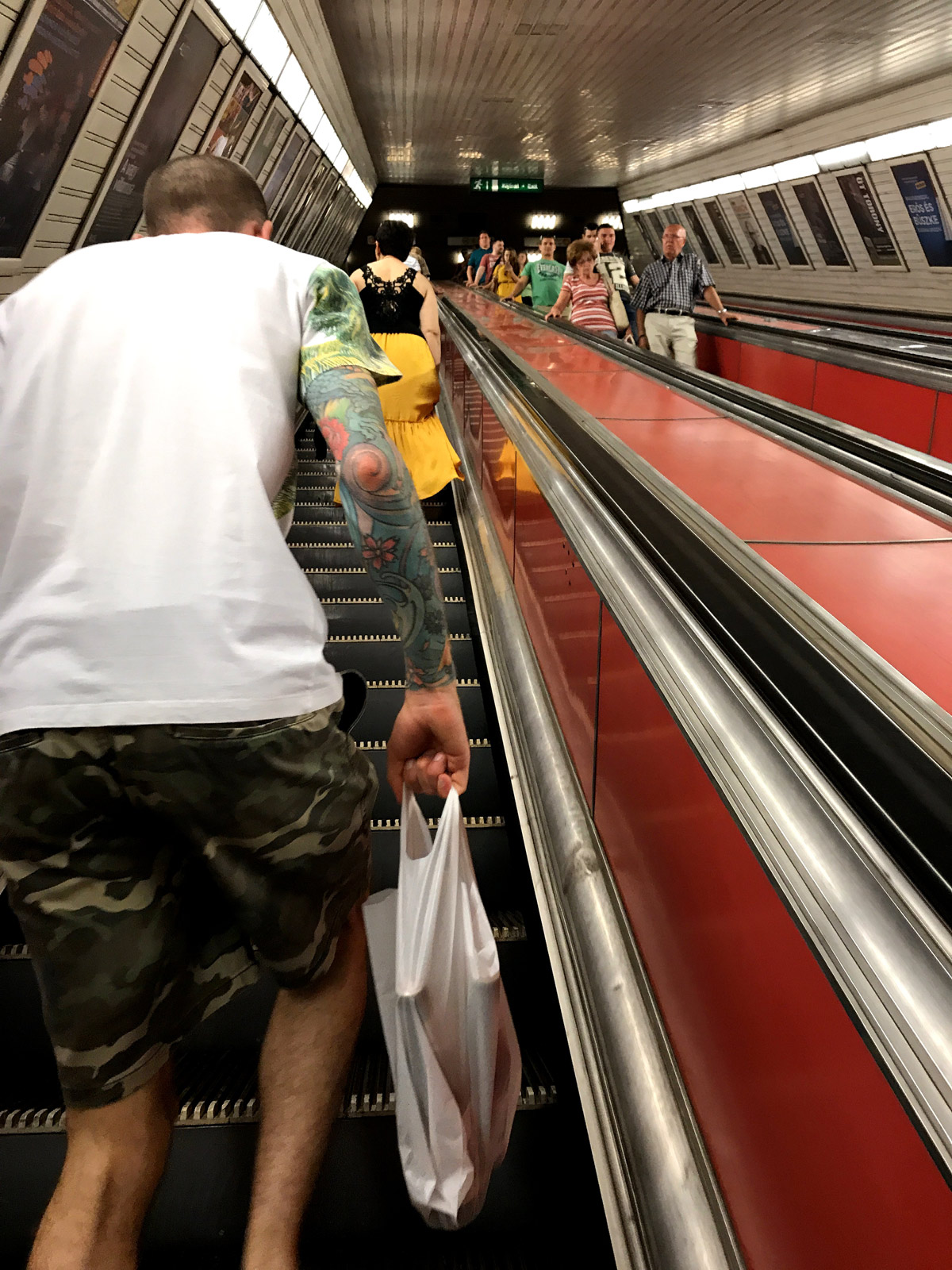
The M1 has only three cars traveling together. The cars are about 2/3 the size of a normal subway car in New York City. The stations usually have heavy wood ticket booths, maintenance doors and, oddly, cabinet bins. That were built this way for the unusual track gauge necessitated by the shallow tunnels.
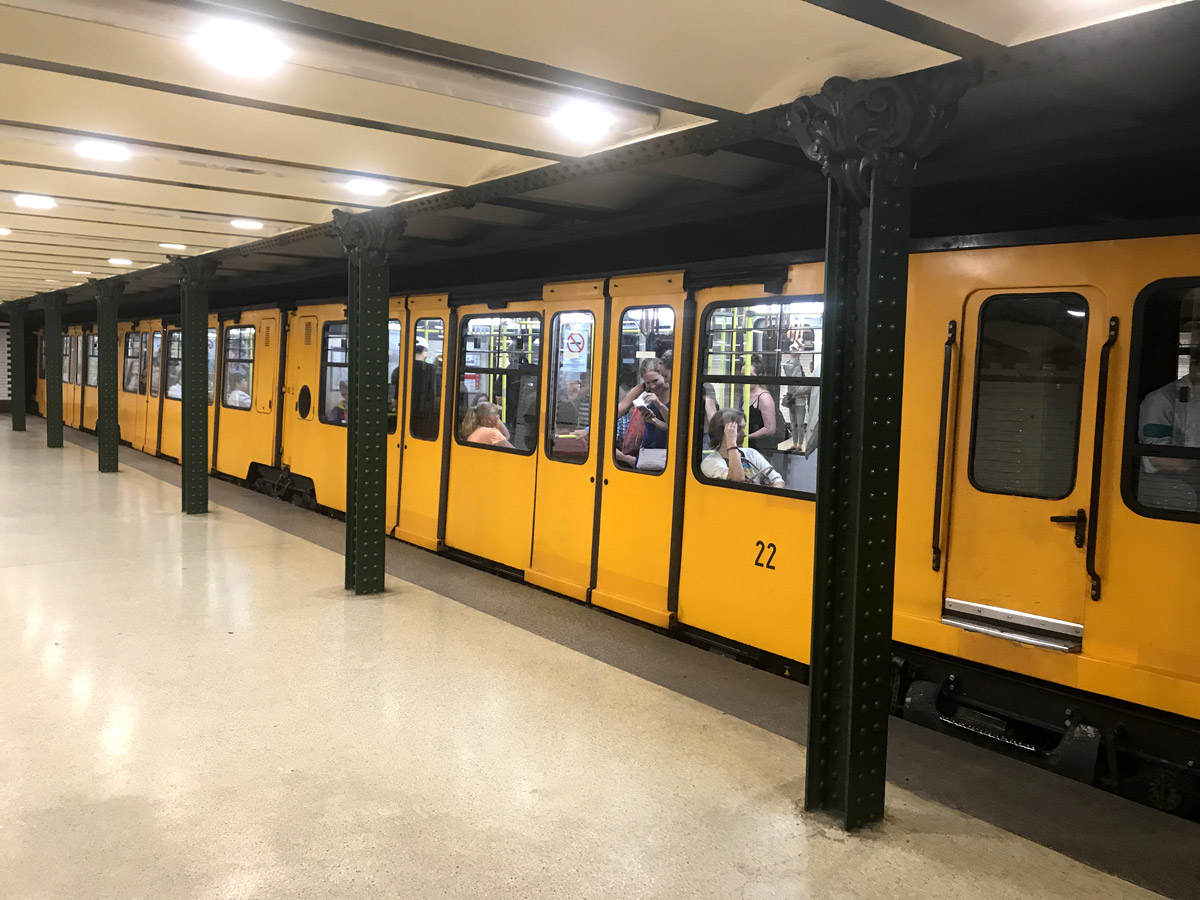
The M3 has Soviet-made cars that are well passed their expiration date and prone to delays and air conditioning failures. However, they are dope-looking with residential ceiling lights (sometimes with faltering bulbs making it dark), cushioned seats and graffiti scratched on the windows.
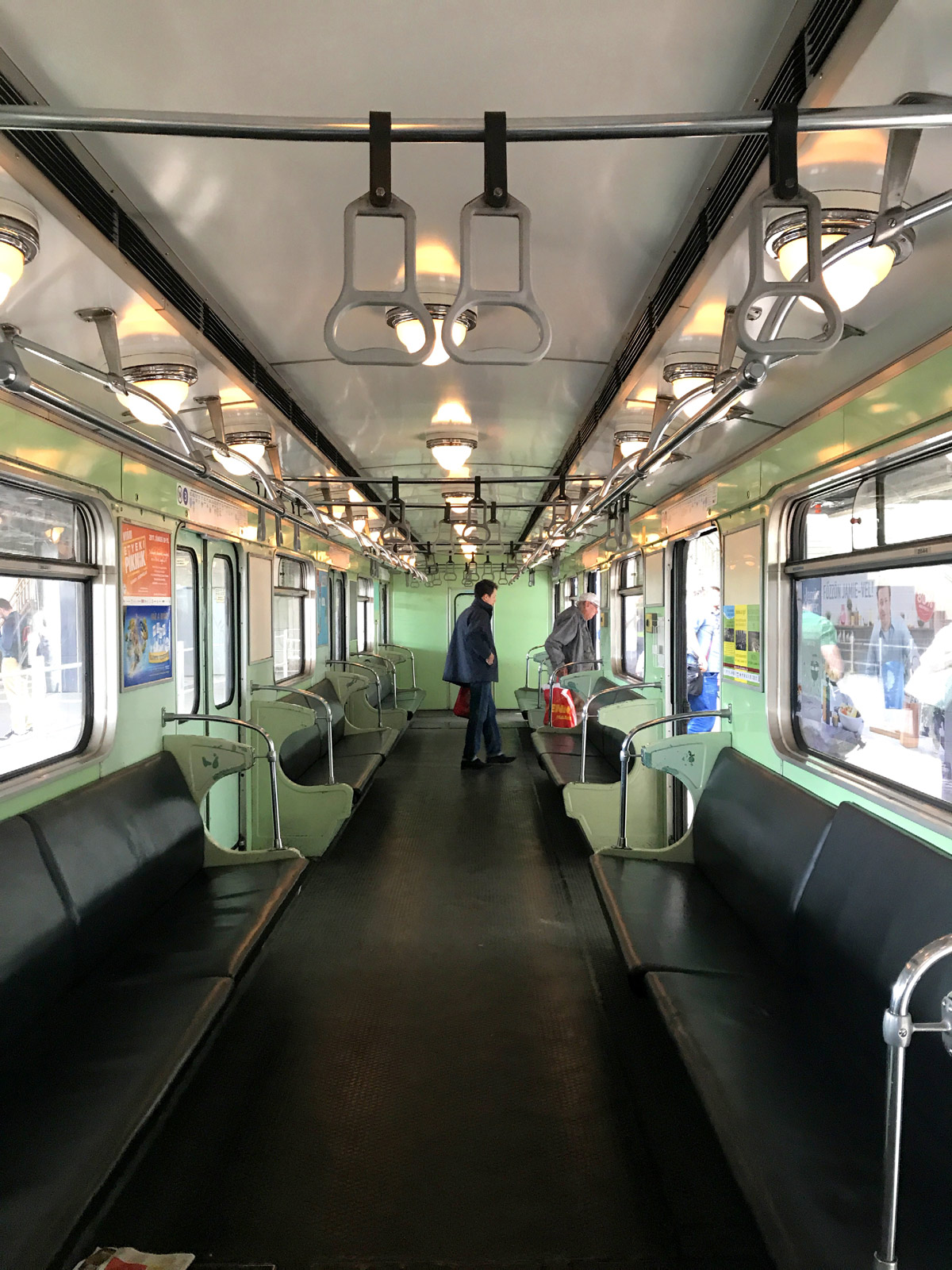
The metro system “M” initially reminded me of the Batman logo of spread wings. After further reflection, it may look more like an upside-down Wonder Woman logo.

The airport is about an hour drive from the center of the city and a cost-effective way to go and from the airport is miniBUD passenger shuttle. For two persons, the two-way cost was 9.900HUF ($36US).
Lodging
Through Airbnb, we stayed in a spacious, second-floor, eleven-foot ceiling, two-bedroom apartment with an updated kitchen and bath and good Wi-Fi for only $60 / night. It is called “Home for Art Lovers”, because of paintings from the owners and other artistic flourishes decorating the apartment. It had an awesome courtyard with classical figures as columns.

It is in the District VII, close to Heroes’ Park. Most places we visited could be reached between fifteen and thirty minutes through public transportation and walking. The #70 trolley stopped right in front of our door.
When we arrived, I had misplaced our entry instructions and could not access them on my email because I had no Wi-Fi access. A resident came through the street door and let us into the court yard. A young man, who lived there and was outside of his apartment, and his wife stopped to help us. They figured out which apartment was ours and knew the keys were left under the outside mat. He even helped us carry the suitcases upstairs. As we did not know the code to come into the building’s street door, they gave us an extra electric fob to use in lieu of the code. We greatly appreciated their effort and concern. I mentioned this vignette as it is a good example of the goodness of people often encountered when traveling.
Cuisine
We cooked breakfast in the apartment after buying vegetables, fruits, nuts, eggs, yogurt and milk in the local market. Our main meal was dinner. Half the time we ate in traditional restaurants featuring ample paprika seasoning, tasty and filing soups, goulash (stew) dishes, grilled and breaded whole fish or fillets and apple strudel dessert.
One time I saw scallops on the menu and ordered them thinking it was going to be seafood, but instead it was three, large wiener schnitzel (breaded and pan-fried veal cutlets) and heavier than I normally eat. In a foreign country, it is always a good idea to confirm what you are ordering in a restaurant.
Internet and Phone
Internet access was available in all the restaurants we went to. We used a roaming plan from our ATT&T Wireless service in the US. It cost $60 for free texting (for some reason, did not always work), phone calls for $0.50/minute and 300 megabits of data (which was enough, as we used Wi-Fi extensively). We may have been able to save money getting a SIM card in each country, but it didn’t seem worth the hassle. Of course, you can always use Skype, Google Voice or other apps from your computer to make calls, if you can get Wi-Fi.
Our place did not have cable service, so we used our computers to keep up with the news. We found out that HBOGO and US Cable services do not stream outside the US.
Safety
The city is very safe, even with a very light police presence. Of course, you must use common sense and be aware of your surroundings, especially if you stay out very late and have been drinking.
Travel Guide
I am a Rough Guide aficionado, but I could only find a Budapest guide by Time Out, updated in 2011, in my local book store (Book Culture, 536 W 112th Street, NY, NY 10025). For no good reason, I always thought these guides were mostly listings of top tourist attractions, restaurants and bars. I was wrong. The compact book provided information on social trends and history, out-of-the-way suggestions and good street maps.
Orientation
There are two good ways to get an orientation in most major cities: free walking tours (tipping the guide at the end) and hop-on/hop-off tour buses (Budapest has both). I prefer the walking tours, as I get more history and exercise instead of sitting for most of the day. Many free tours start near the Danube River between 10am and 11am and most spend some of the time in the Castle District.
Part 2 – Discovering Budapest
Chain Bridge
Believe it or not, the closest permanent bridge over the Danube was in Vienna before the Chain Bridge was built. It is a short walk across and a good place to start your exploration of the city, as you can see many of the famous buildings from there.
It opened in 1849, designed by an English, civil engineer named William Tierney Clark, and built under the supervision of the Scottish engineer, Adam Clark. There are several interesting architectural details which are in every guide book, but the dominant feature is the four realistic lions guarding the bridge

Castle District
The next place I would go to is the spread-out Castle District (or Hill), often the only place tourists go to in Buda. Of note, there is no longer a castle, but enough grand government-buildings, churches, museums, monuments, cobblestone streets and views of Pest to keep you occupied for at least a few hours.
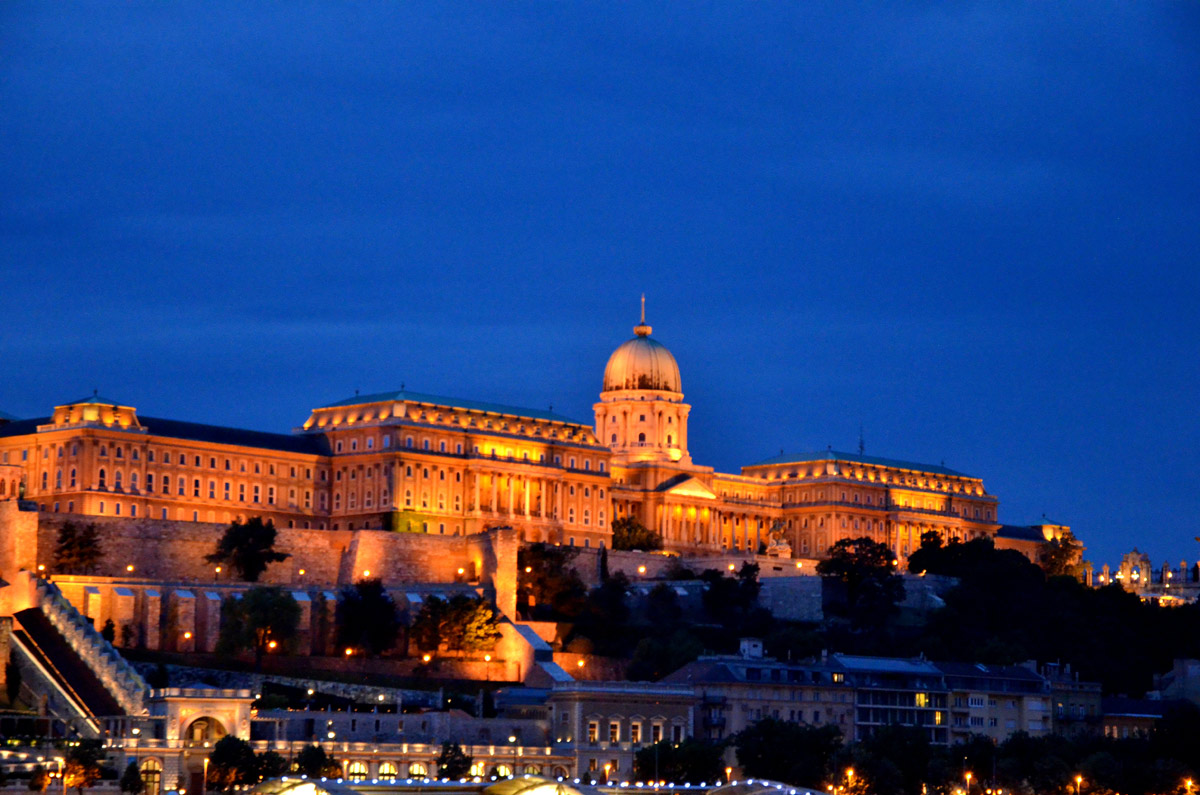
If you cross over from Pest by the Chain Bridge, you can walk up a switchback trail to the top which takes some effort and about ten minutes or take the funicular.
The first citizens arrived in Castle District in the 13th century after the Mongolian invasion, seeking protection in the hills of Buda. The first royal castle was built in the 13th century. In the 15th century, there was significant expansion utilizing Italian tradesmen, but unfortunately the area was substantially destroyed by the Turkish 150-year occupation finishing at the end of the 17th century. In the next 250 years (not withstanding considerable destruction during World War II), the locale was rebuilt in a variety of architecture styles and is now a UNESCO World History Site.
All guide books dedicate several pages to this area. The highlights are:
The Royal Palace (includes the Budapest History Museum, the Hungarian National Gallery and the National Szechenyi Library).
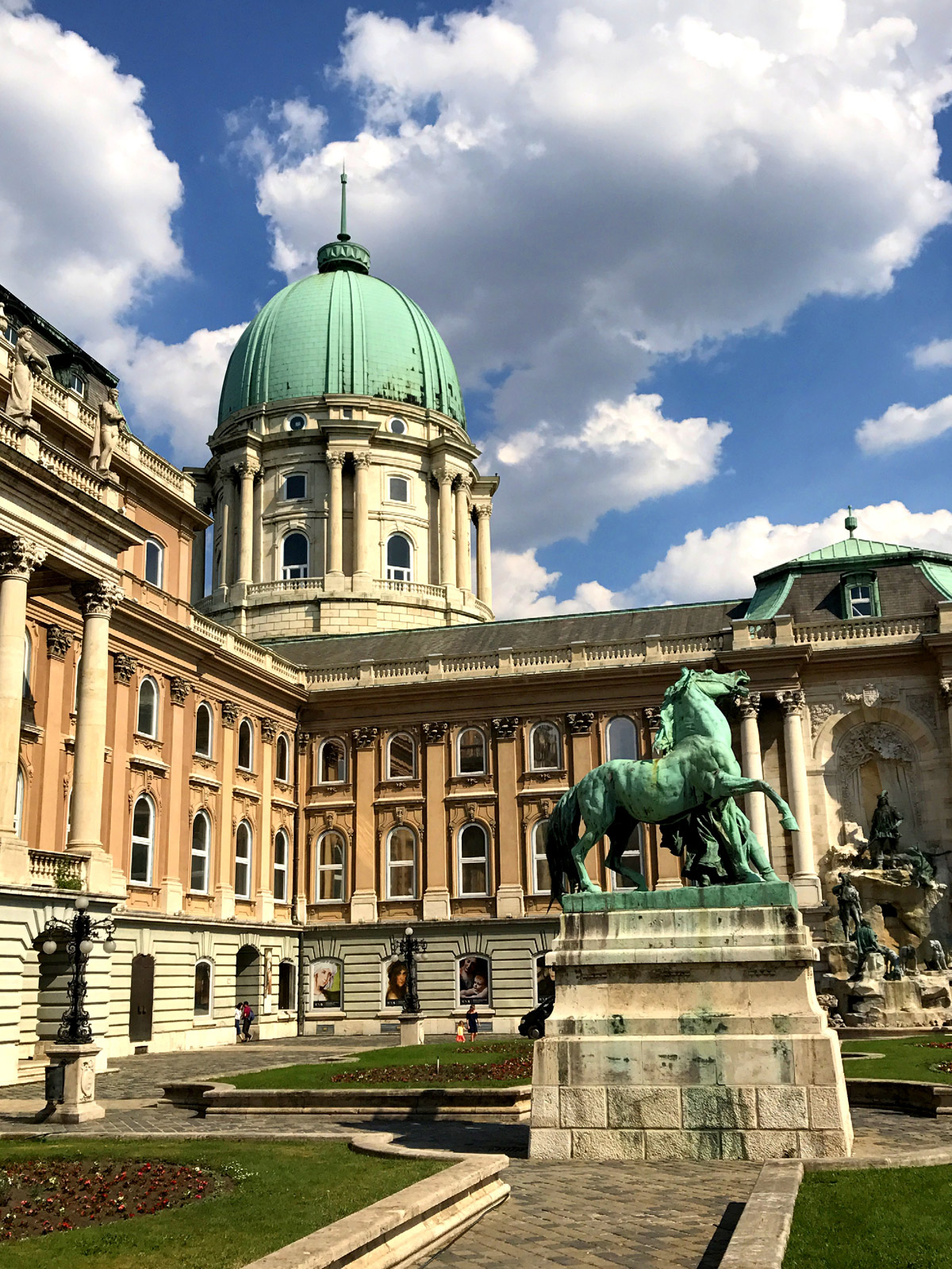
Matthias Church with its striking color-tiled roof.
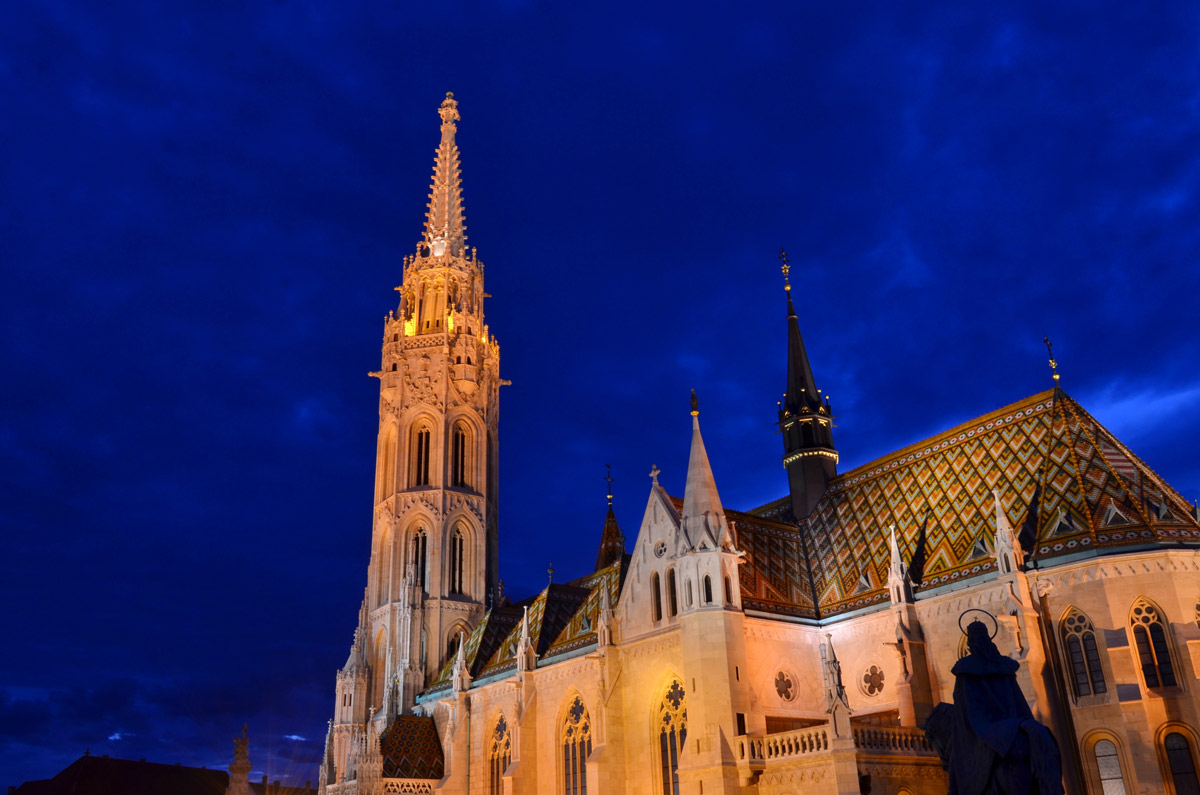
Fisherman’s Bastion (a wall of seven connected Neo-Romanesque towers that are far too up the hill to be used for fishing, but the fisherman guild protected the city in medieval times). In the inside is a statue of St. Stephens.

Parliament
With two exceptions (described at the end of this section), we were mostly on the Pest side. Next to the Danube, the Parliament is one of the biggest buildings in the world. It is so big, if you are tired, outside you may want to take the streetcar from one end to the other. The building was inspired by Westminster Abbey in London. There are daily tours in several languages and you should buy tour tickets a day or two ahead of time either at the building or online. The inside has some amazing rooms with the highlight being the Crown of St Stephens, which was used to coronate kings and guarded by unmoving, physically imposing soldiers.

St. Stephen’s Basilica
St. Stephen’s Basilica, another immense building, is the largest church in Budapest. It took fifty years to build and during its construction the dome collapsed once. There is a 500HUF (almost $2US) fee to take the elevator or 364-steps to the towers for a 360-degree view of the city. To enter the church, there is a pot for donations.

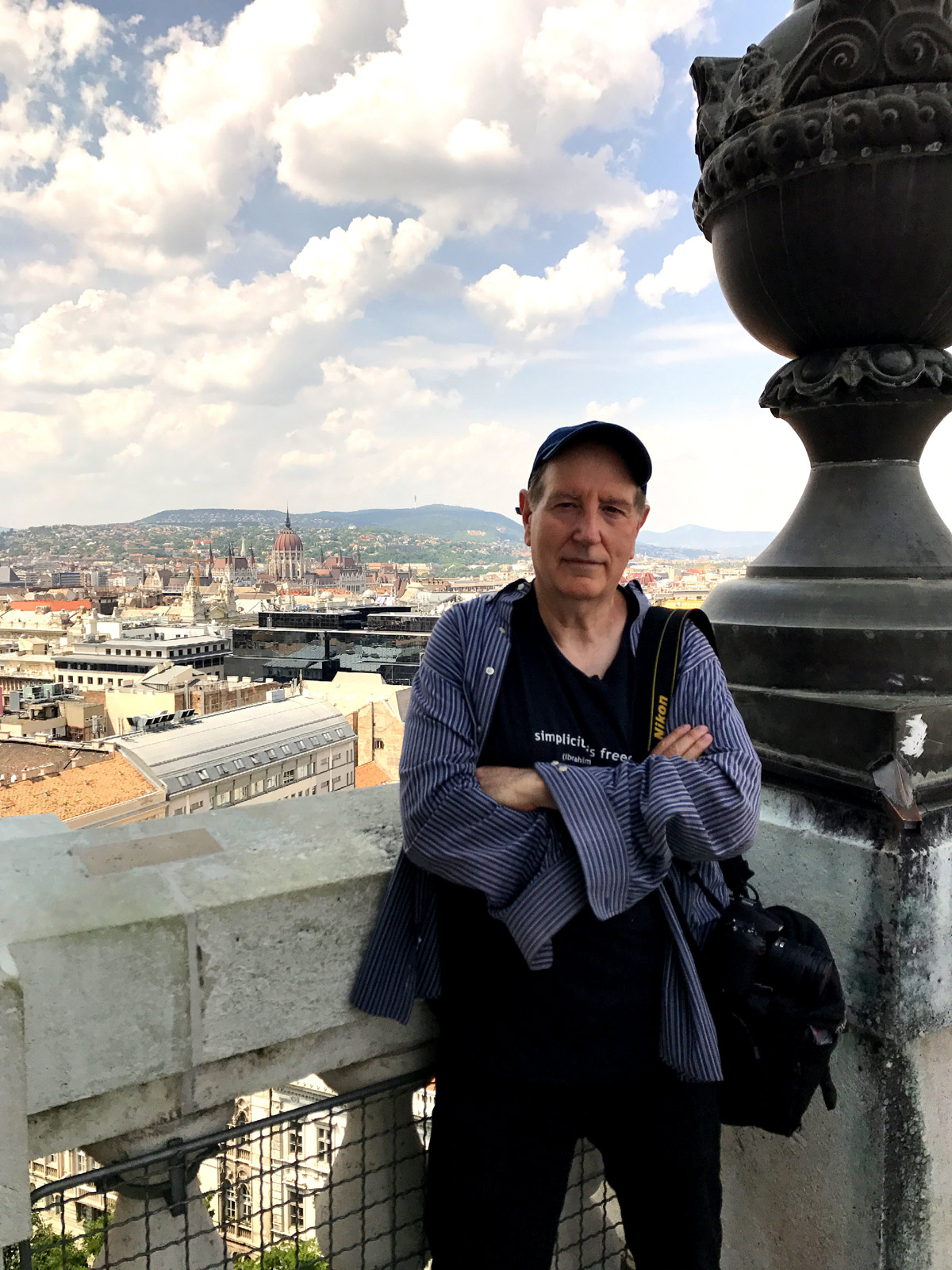
Opera House
This Neo-Renaissance masterpiece has 1,200 seats in a horseshoe auditorium. It was a favorite of ours. It has elaborated embellishments throughout. Fifteen pounds of gold was used in the decoration. We took a tour for 2,900HUF/person (just over $10US, less for students), plus extra to use a camera. It is considered to have the third best acoustics in Europe (after Scala in Milan and the Paris Opera House). Many famous conductors were the music directors, including Gustav Mahler from 1888 to 1891 and Otto Klemperer from 1947 to 1950. We were lucky to have a 15 minute, one-singer performance on the stairways
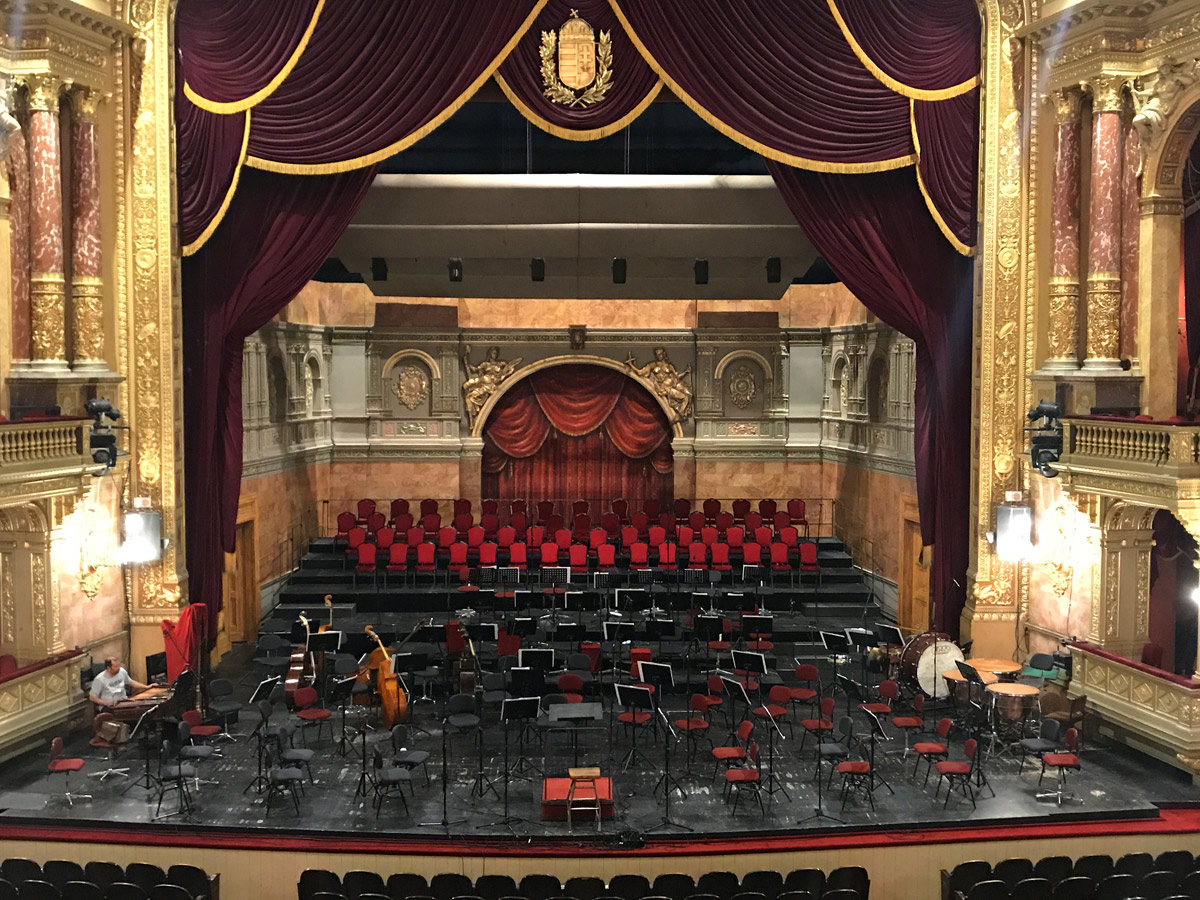
Great Synagogue
Built in the mid-19th century, this synagogue on Dohany Street is built in the Moorish-Revival style and sports two onion domes. Inside, it has more of an appearance of a church, especially with the pipe organs. Tickets for the complex, including a museum are 4,000HUF/person (about $15US) and 3,000HUF for students. On the outside grounds, there is a memorial to Raoul Wallenberg, the Swedish consul in Budapest during World War II, who saved over 50,000 Hungarian Jews. The most emotional site for us was the Tree of Life, an aluminum weeping willow with each leaf having a name of a Jew who died during the Holocaust. Once you look at it more, you realize the tree is an upside-down menorah.
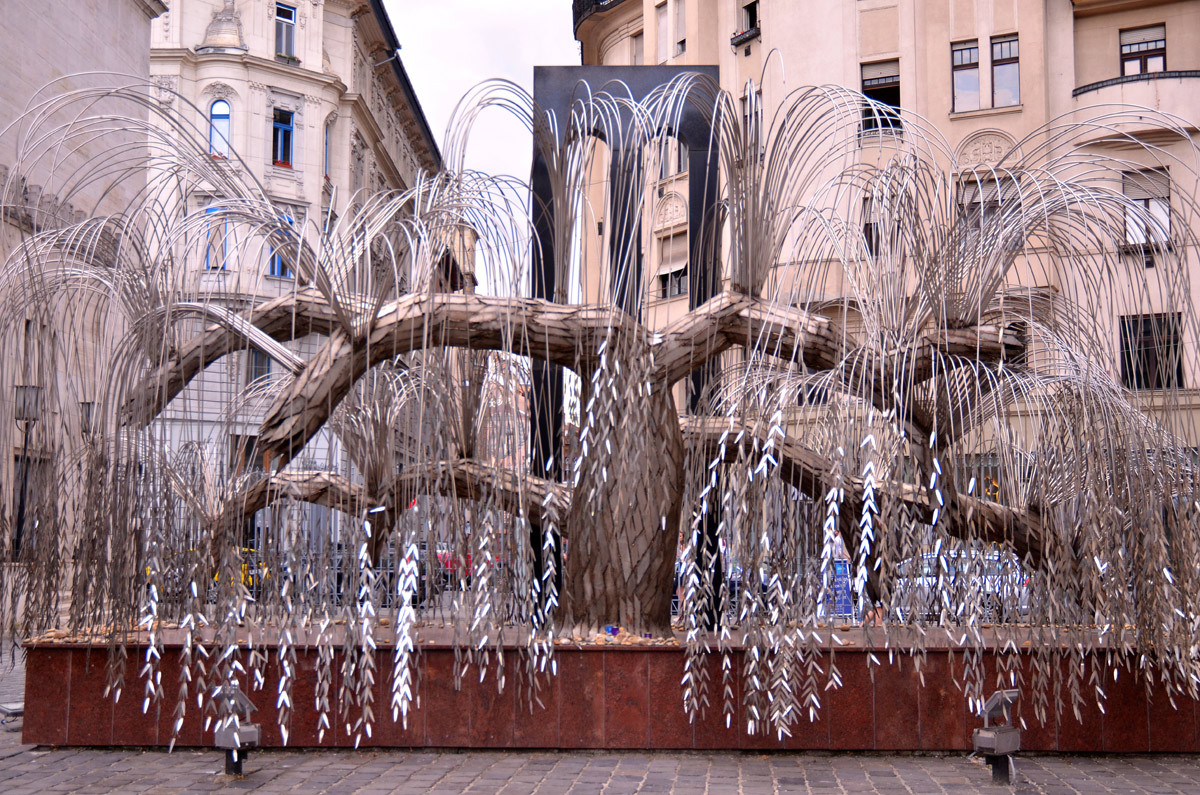
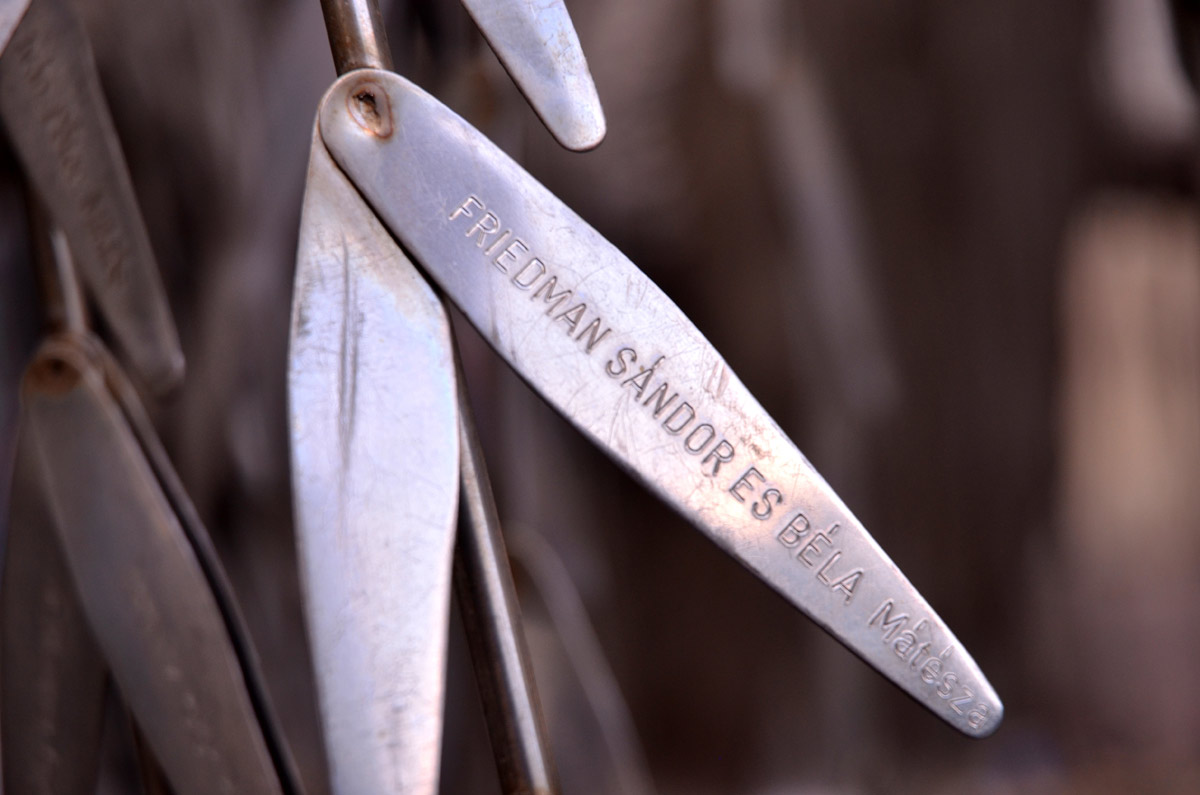
Szechenyi Baths
One moniker of Budapest is the “City of Spas” as it has over a hundred thermal springs, which were used dating back to the Roman era. Today the buildings are originally built from the Ottomans or afterwards.
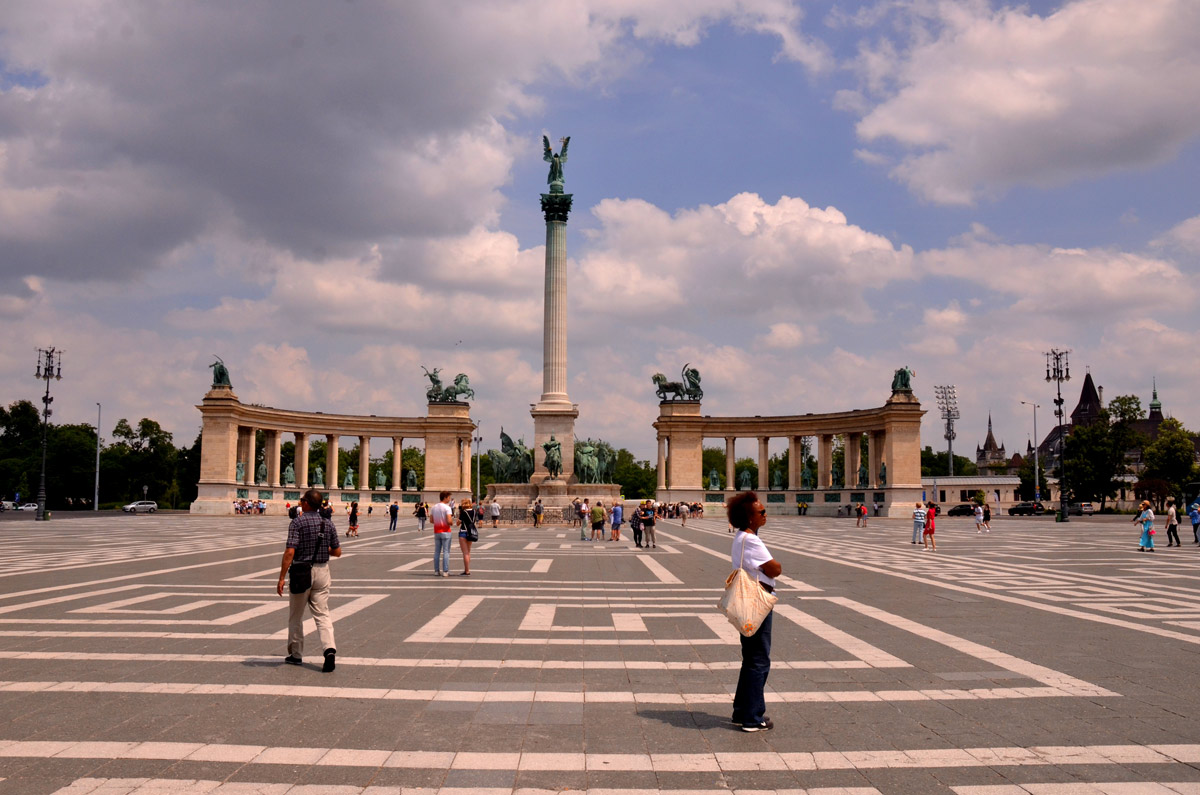
An Art Nouveau marvel is the Szechenyi Baths, located near the imposing statues and national museums of Heroes Square in the Budapest City Park. Price of ticket vary according to the day, but is around $20 to $25. This complex has eighteen pools, both inside and outside. At an additional price, you can receive massages, facials, pedicures and other services. We were hot, so we did not want to spend several hours in the spas. However, at the ticket office, I could see the outside pools.
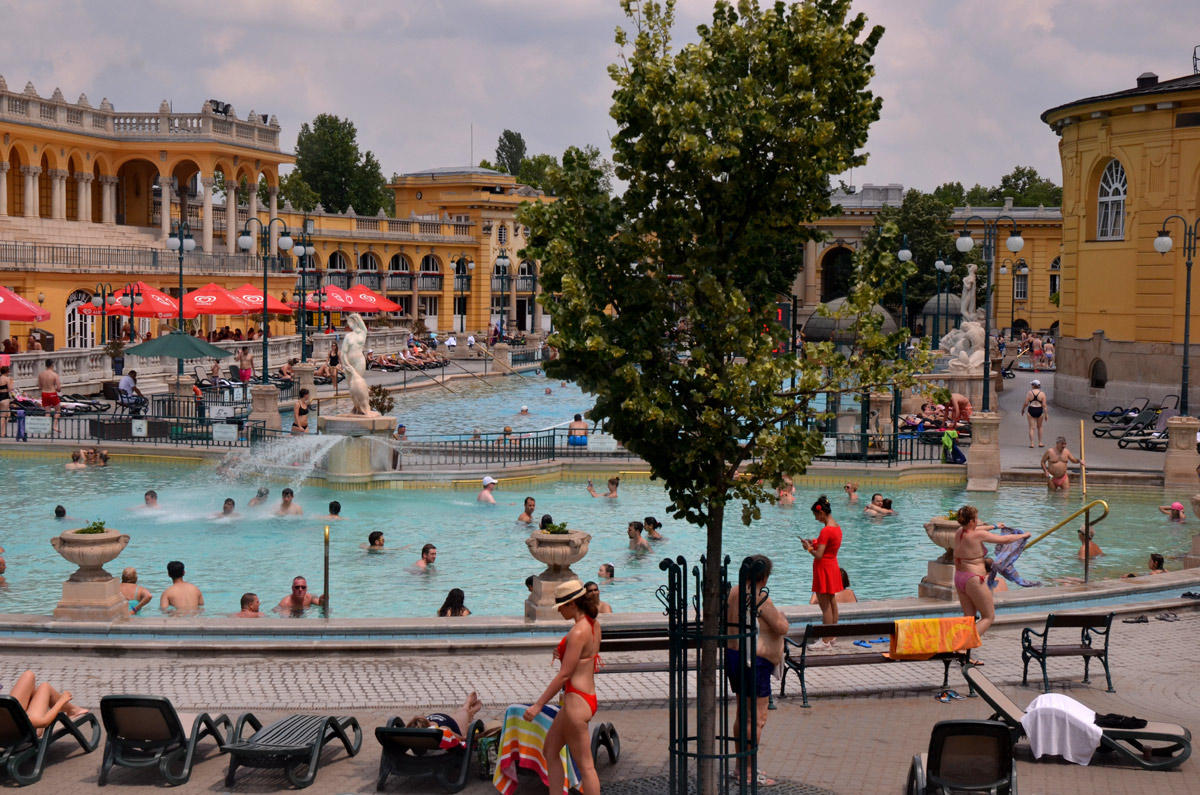
Ruin Bars
This is a unique Budapest phenomenon, mostly in District VII in Pest. Ruin Bars are in completely or partially abandoned buildings that have been converted into bars or clubs. They popped up fifteen years ago and were quasi-legal at best. Many are apartment buildings with courtyards open during months of good weather. They usually have used furniture scattered around and revolving art installations. Recently, the authorities have imposed restrictions on these all-night partying venues, helping nearby residents sleep.
We went to Fogashaz (Akacfa utca 49-51) shortly after it opened around 8pm. We get up early, so no staying out till dawn, plus I have done enough of that for a lifetime and am at another stage of my life. There were only a few people there and it was not completely dark, so I was able to take a few pictures of the joint without a crowd of intoxicated patrons.
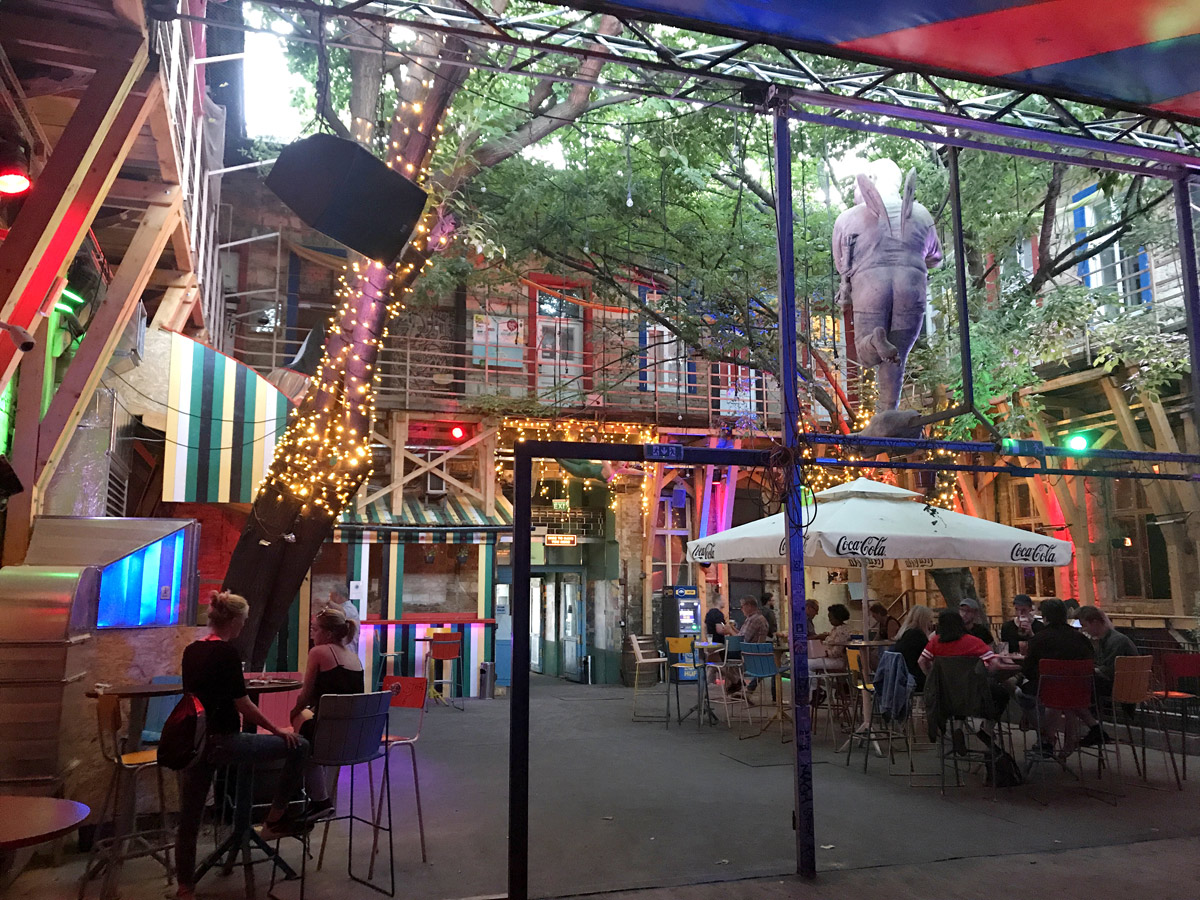
Children’s Railway
The Children’s Railway is one of the oddest, but endearing, things we found in the city. It is on the Buda side, far from Castle Hill, but easy enough to get to through the metro and a transfer to a bus. Except for the engineer and I’m sure some adults in the background, the railroad is run by children aged ten to fourteen. Under Communism, this railway was built for Pioneers (rough equivalent of boy and girl scouts) to foster national solidarity and allegiance. The full trip of seven miles takes about 45 minutes. There are several trips per day. There are two ways to return to the center city, besides taking the train back and retracing your steps. You can take a chair lift down the high hill, at Moszkva station (go to end and return one stop). Or at the last station, Huvosvolgy (Cool Valley), walk about ten minutes and take the cog-wheel railway. We did the latter (paid with same public transit tickets used for buses and the metro) and found it interesting going through residential neighborhoods and seeing the different styles of houses.
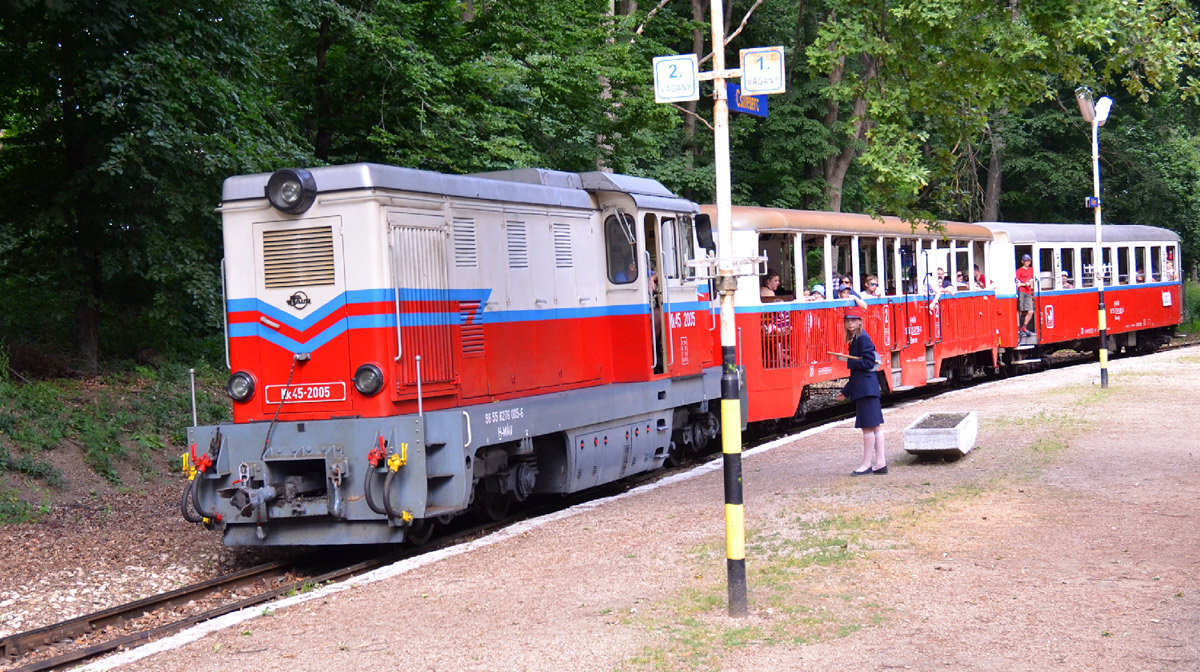
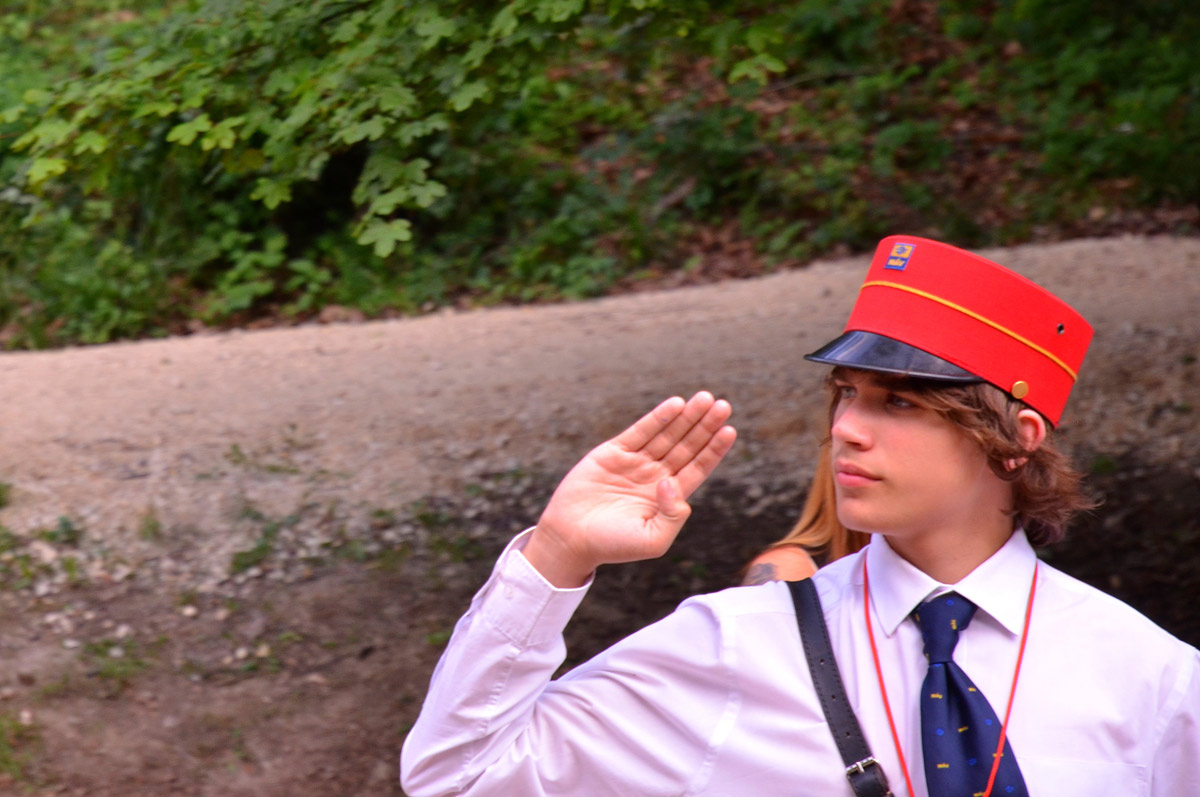
Memento Park
Memento Park is on the outskirts of Buda, next to yards of construction material. It houses about forty, mostly massive, Communist-era, Social-Realism monuments. There is a tour bus which leaves at 11am from Deak-ter metro station. You can also reach it using the metro and bus. There is something intriguing about the monuments, which were made for both propaganda and sincere civic reasons. Just outside the park, there are World War II barracks which show spy-training films with English subtitles. The dialogue sometimes seems out of “Get Smart”, but it’s fascinating observing the amount of effort to clandestinely follow someone and sometimes turn a citizen into an informant. A bonus is seeing the then state-of-the-art surveillance equipment.


Restaurants
We ate out every night. The meals were either excellent or good. Of note, tipping 10% is considered standard if there is no service charge (which you need to check) or more if service was exceptional. Also, utca is street in Hungarian. The following are recommended and prices are for two without tip and a glass or two of wine:
The inside of Paprika Vendeglo (Dossal Gyorgy utca 72) is a traditional Hungarian farm house with large logs on the ceiling and walls. We tried it because it was around the corner from where we were staying. It turned out to be the best restaurant we went to. The cuisine is traditional Hungarian and cooked perfectly in hearty portions. The staff was very helpful. We accidentally left a HUF note for a tip that was equal to the price of half the meal and they pointed it out and helped us give an appropriate tip. We spent 13,120HUF ($47US). You need to get there early (before 6:30pm) or have reservations.
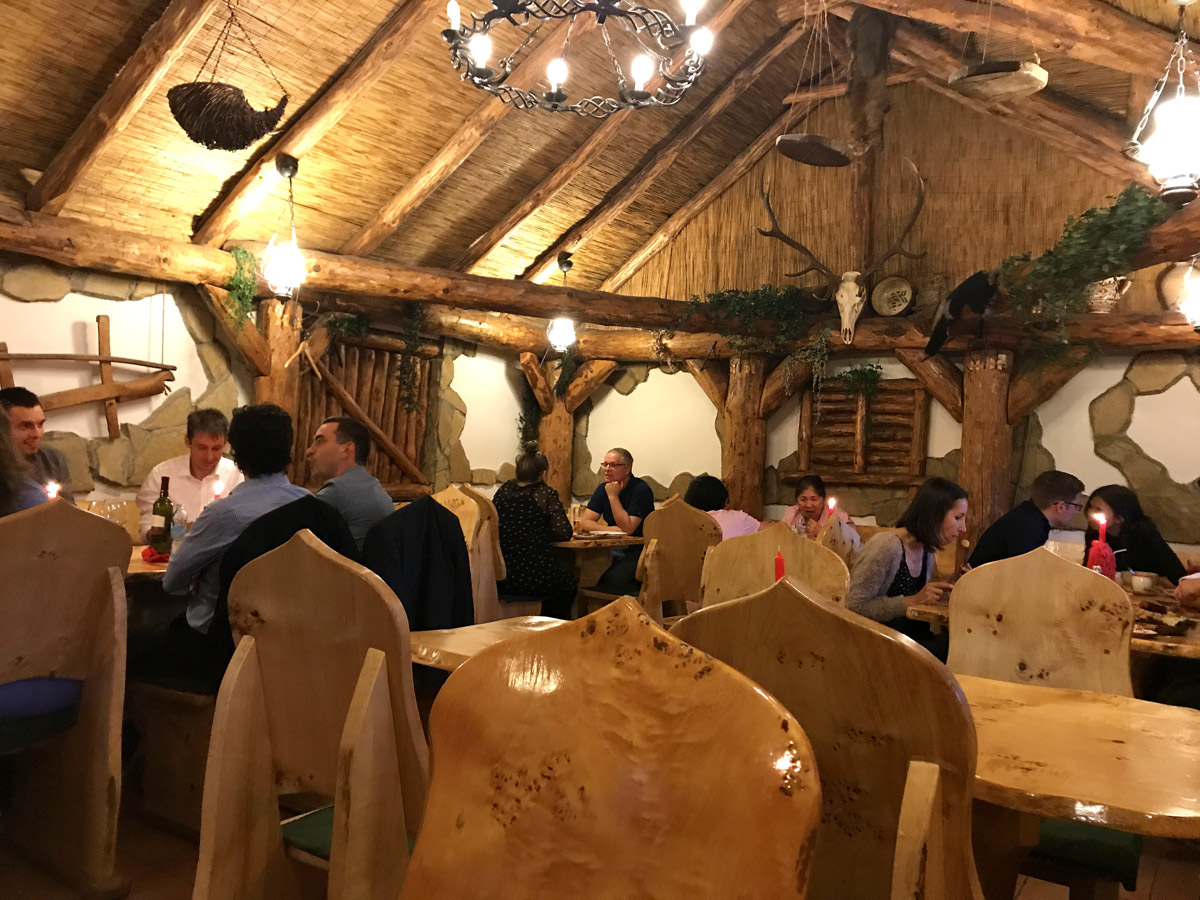
At the Big Fish Bistro (Andrássy utca 44 – a few blocks from the Opera House), you go to a counter and choose your seafood (by weight) and other foods and afterwards they deliver it to your table. The place has an industrial look with visible vent ducts. The food (grilled fried calamari for me, cod for Khadija) was fresh and cooked just right. It is pricey for local standards, 18,590HUF ($68US), but no tip is required.
Klassz Étterem és Borbolt (Andrássy utca 44 – across from Big Fish Bistro) is not engaging in false advertising, it is a classy restaurant. Food is a mix of Hungarian and French. The portions are more bistro-modest than a traditional Hungarian restaurant (we appreciated this). The soups were excellent. The wine list is long with some Hungarian wines and the glass we had was excellent. Not cheap by local standards, but very good by international ones (17,000HUF – $62US).
Tuning Bar & Burger’s (Akacfa utca 45) website states “our goal is to achieve a level of hospitality where our dear guests feel themselves at home from the very first moment”.
They achieved that for us as the waitress was friendly and took time to explain the menu. We had a large burger and a chicken sandwich, both tender and moist. The walls are painted with US song names from the 50s to the 70s and pictures of classic cars. There is a live video projected on the wall showing the grill where the meats are being cooked. The price was only 9500HUF ($35US).
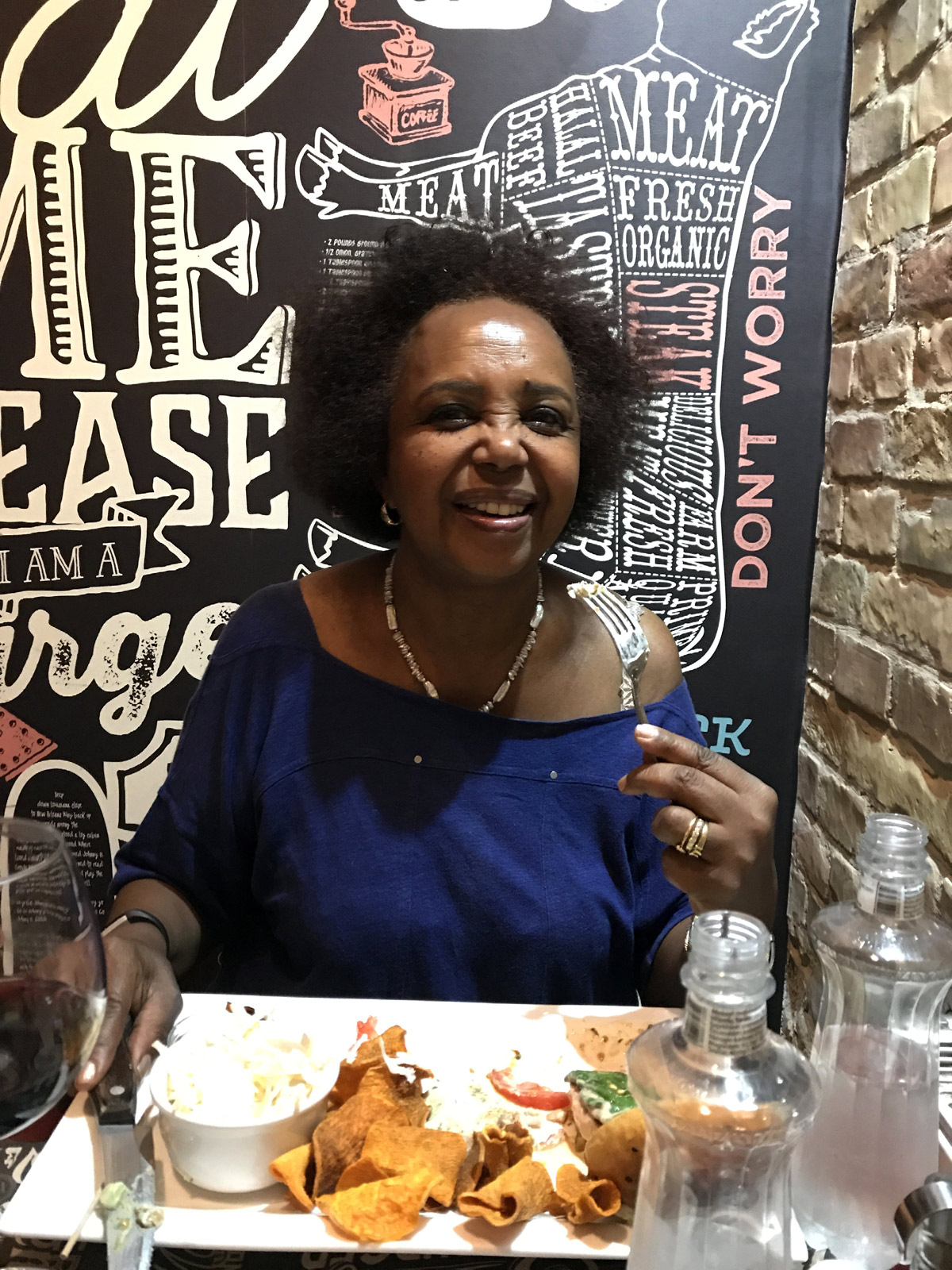
It was after 11pm on our last night. We just spent three hours photographing the city from the Castle District. We were hungry and wanted a light, quick meal, but not fast food. Luckily, we found Market BDPST (Kiraly utca 8) that has a separate serving counter for Mexican food, pasta and burgers. We had burritos and tacos, which were freshly cooked and equivalent to what you would get in a traditional restaurant, not in a Taco Bell. The price was 3200HUF ($12US).
Our free-tour guide made a point to recommend New York Cafe (Erzsebet krt. 9-11). One late afternoon, we made the effort to go there. We found it is part of the Boscolo Budapest 5-star hotel with a separate entrance. It is two floors, with various musicians (I remember the piano and cello) playing all the time. The furniture and décor are Rococo in their exuberant flourishes, something you would find in Paris, but not New York. I believe the name stems from the building’s original ownership by New York Life Insurance Company. The apple strudel was very good, chocolate milkshake was small and wine decent. We spent 8,800HUF ($32US). It is worth the price only if you like the ambiance.
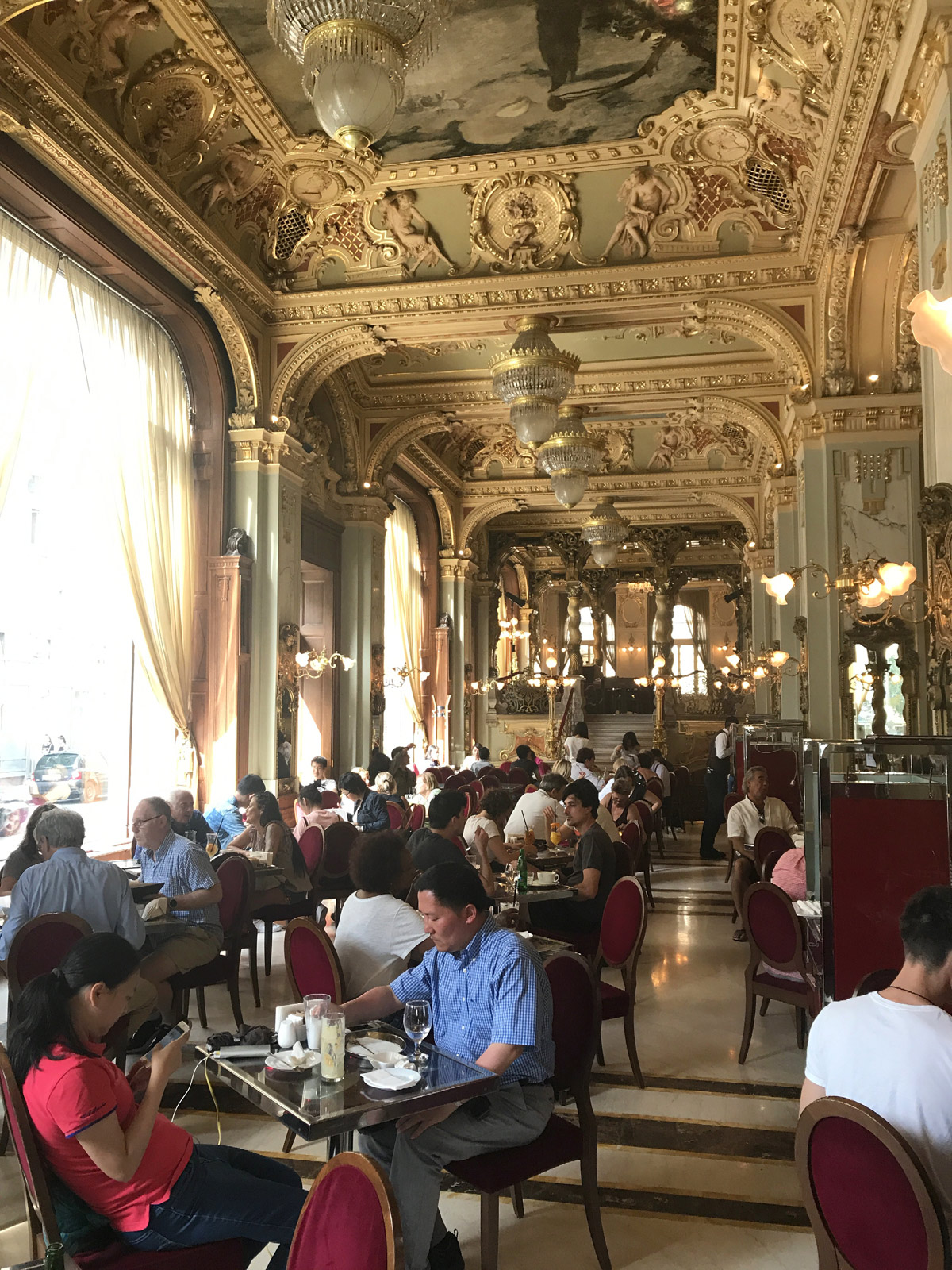
Street Life
The street life and the people were special
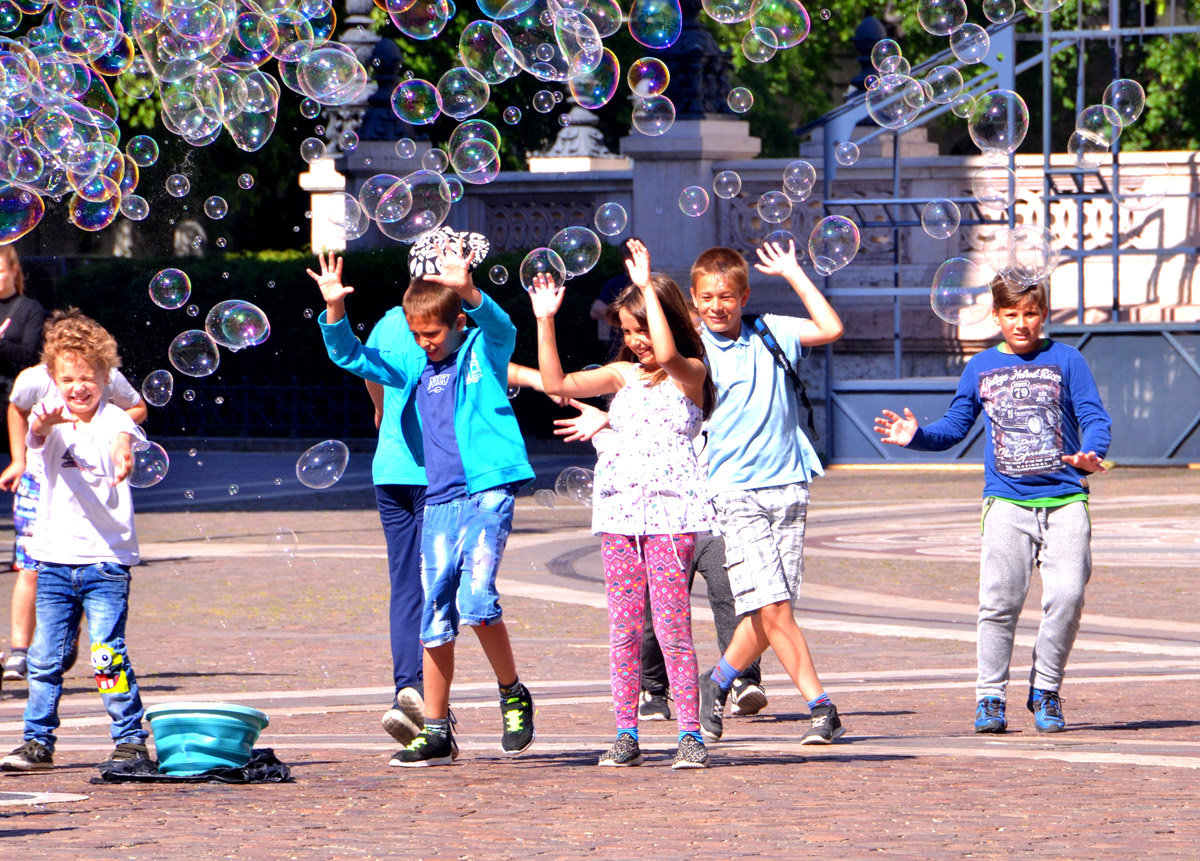
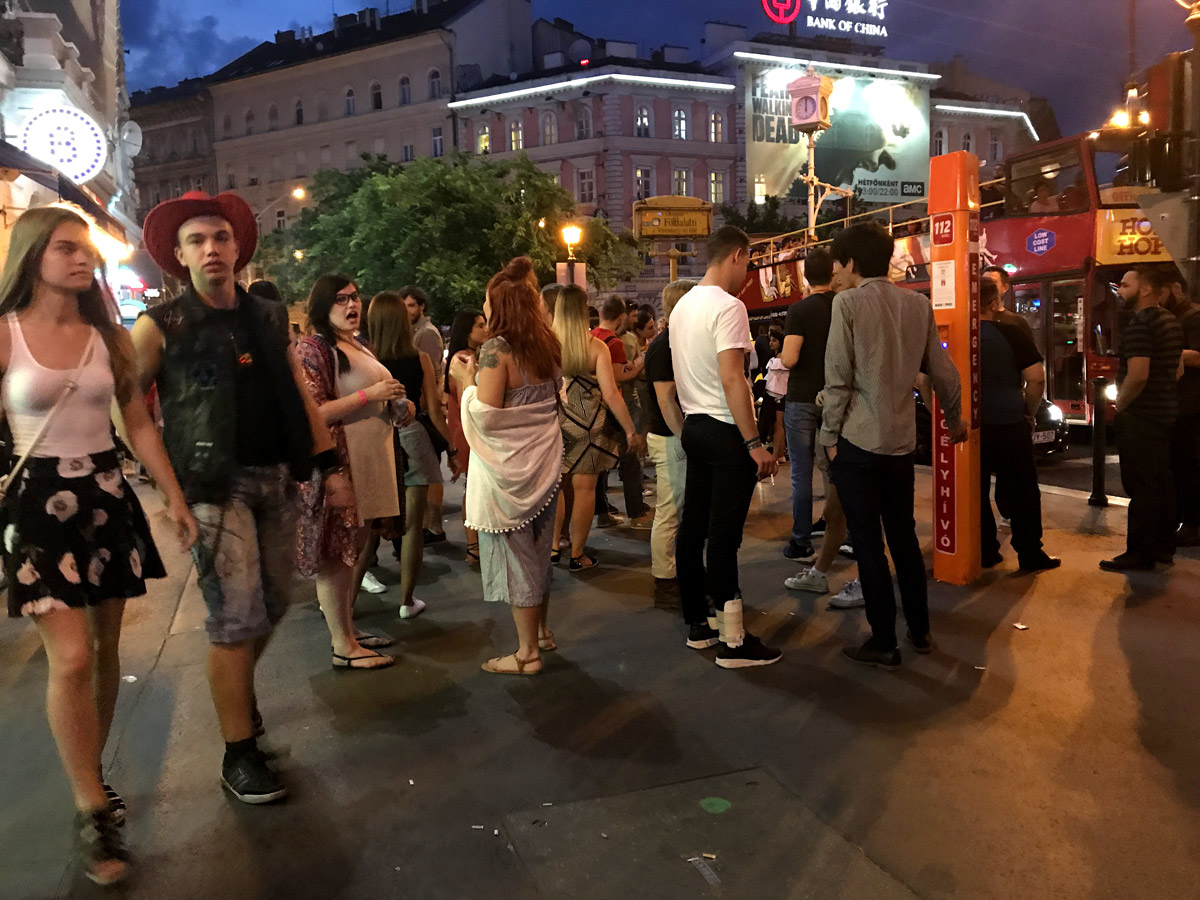
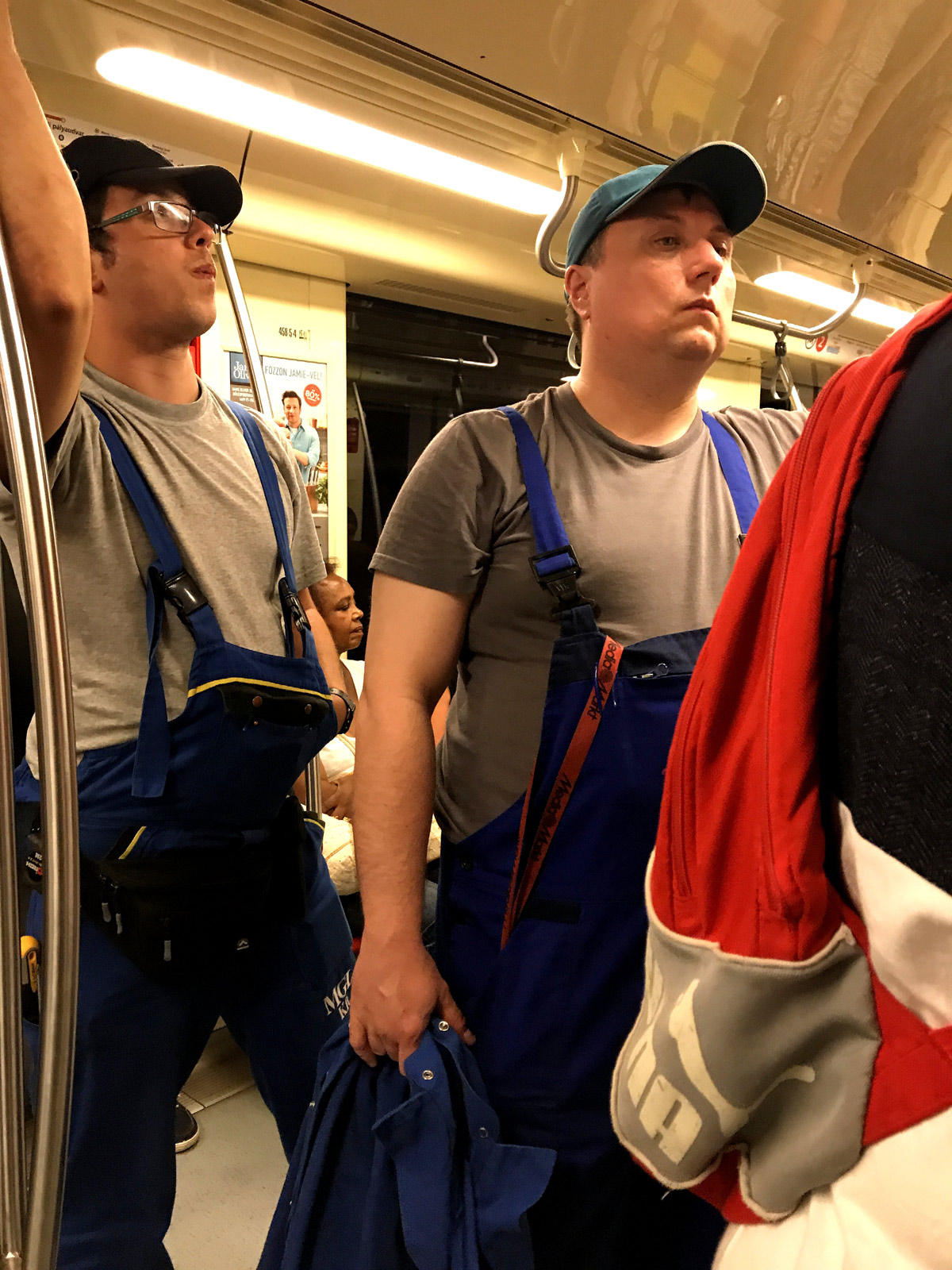
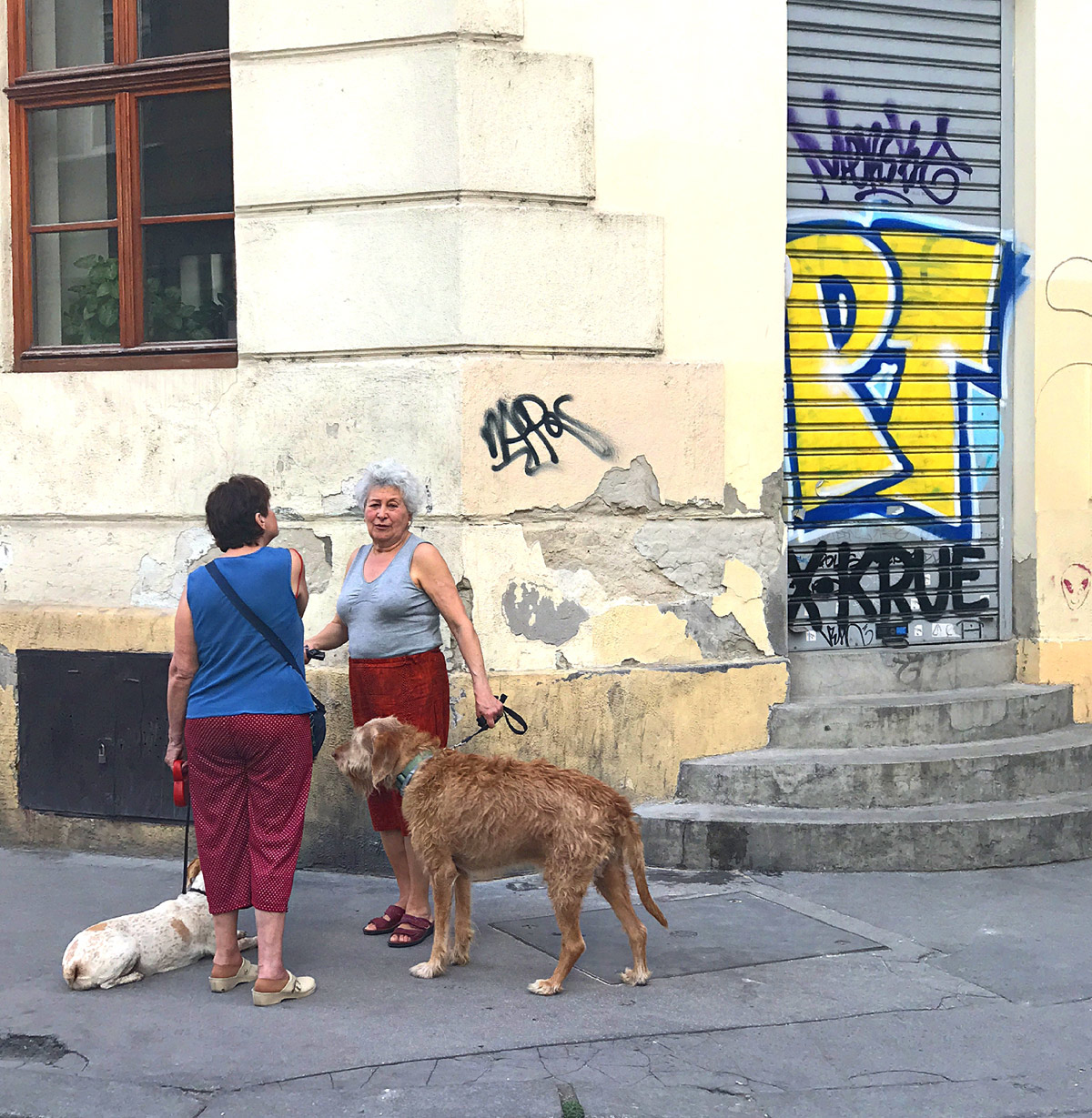
Go to the Photo Gallery for other pictures of Budapest.
Final Thoughts
Not too many cities can keep you engaged, without a lot of effort, for a week like Budapest. We could have spent a couple more days visiting the museums, but that will have to wait until next time.

